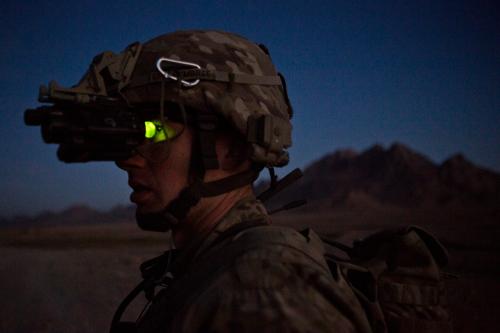Last week retired General David Petraeus and I wrote a Wall Street Journal op-ed arguing that, while the U.S. military is certainly facing a number of significant strains and future challenges, there is no crisis in military readiness. Unit by unit, today’s American armed forces are very good and rather well-prepared for the various tasks they could be called upon to undertake. To be sure, they remain better prepared for counterinsurgency and stabilization missions than for high-end warfare.
The Army, and the U.S. military in general, continue to recover from Iraq and Afghanistan; that effort will take some additional time. And there is plenty of room for debate about whether the military is large enough, and also about whether it is following the right strategy to prepare for new threats. But on balance, the quality of our armed forces today is quite good. This point is important enough to be worth nailing down decisively.
This op-ed attracted a number of criticisms. I would like to respond to several personally.
- Some have said that Army budgetary resources are inadequate. But they are, unit by unit, substantially greater than during the Reagan buildup, even after being adjusted for inflation.
- There are anecdotes of Army rifle companies that are undermanned, and other such concerns about hollow force structure. My best guess is that some of these problems, to the extent they are real, result in certain units from the process of downsizing (which the Army has been doing in recent years). For example, if there is a plan to combine two units into one and the plan has not yet been put into effect, the preexisting units might have shortages just before they are merged. Or, a unit about to deploy might be capped at a certain numerical size (given President Obama’s quantitative troop ceilings imposed on various operations abroad, for better or for worse). That might require it to deploy understrength. But across the Army, there is no systematic mismatch between soldiers and targeted force structure, so this should be at worst a localized and temporary problem.
There are other anecdotes of tank crews never having fired a live round, and related stories of unpreparedness. If this is so, I question how the Army is allocating resources among its different units. Again, training dollars are robust, by any historical measure and when compared with what the Army calculates that it needs. Yes, sequestration caused temporary problems—but that was back in 2013. Yes, Iraq and Afghanistan caused problems—but we have been downsizing from them since 2011 and now have fewer than 15,000 soldiers deployed (out of a total Army—active plus reserve plus National Guard—of nearly one million soldiers). That represents a 90 percent reduction from peak deployments today—and deployed numbers have been quite modest since about 2013. If the Army has not used these last three years to begin to recover, I would humbly submit that there could be a case for rethinking some of its force management concepts.
Yes, the Army and other services have had to cope with new operations from Liberia to the Baltic states to other hotspots in recent times. But these have all been small operations, totaling at most a few thousand troops each, for a grand total of less than 10,000 in all—and generally far fewer than that at any given time.
Budgets for overseas contingency operations have come down far slower than have forces deployed abroad over the last half decade. This means that there are some extra dollars from the war supplementals that the military can use for recovery. So again, available resources do not appear to be a major problem. In fact, they are relatively robust and generous at present.
To be sure, given the normal life cycle of major units, the Army will need several more years to fully recover from all of the strains of recent operations abroad. There is no case for complacency, or for declaring victory. Nor is there a case for cutting readiness budgets. And to be sure, one can have a vigorous debate about whether the size of the Army has been cut at least a bit too much; indeed, General Petraeus and I make this case, in the op-ed as well as our forthcoming Foreign Affairs article.
But there is not, to my mind, a strong case for questioning the unit-by-unit excellence of the Army in particular, or the U.S. military in general. Nor is there a serious concern about the adequacy of resources on a unit-by-unit basis for equipment, people, and training. In short, there is no readiness crisis requiring dramatic policy intervention. Luckily, for those would-be adversaries who might be listening to our debate, there is therefore also no window of opportunity to exploit in America’s ability to defend its global interests.
The Brookings Institution is committed to quality, independence, and impact.
We are supported by a diverse array of funders. In line with our values and policies, each Brookings publication represents the sole views of its author(s).








Commentary
The state of U.S. military readiness
August 15, 2016